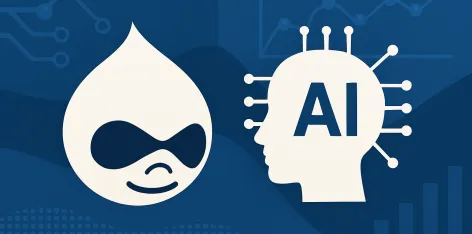
Fiona CrowsonHead of Content

Whether you’re hesitant or confused about the role of generative AI in writing for your business, or you’re a devotee turning to ChatGPT for every line and snippet, there is a way to use AI to your advantage without compromising the quality of your content.
The robots are taking over. They clean our floors, mow our lawns, perform operations and drive cars. For some, this may represent a lessening of job scope or possibly even a loss of job security. For others, it's about time freed to focus on other tasks and perhaps more downtime. There are undoubtedly winners and losers. So, how can we ensure the odds are in our favour when it comes to using AI?
Generative AI, although not a physical service, shares a commonality with these technical enhancements. They all require humans to set the task and its parameters, to intervene, correct and redirect, and troubleshoot when things aren’t working. We’re still there and very much needed.
Many years ago (don’t ask how many), I purchased an all-in-one kitchen tool. This brand is well-known and may or may not begin with 'Thermo' and end with '-mix'. My husband was dubious about this addition to the benchtop. He liked to cook, he said, and didn’t need “some machine” to do it for him. Fast forward many undisclosed years, and the (same) husband is the most prolific user of this thermal mixing device. Has it replaced him and his brilliant culinary skills? Not in the slightest. Instead, he uses it to complement, multitask, speed up monotonous tasks, and cook basic recipe components.
Don’t worry, I’m not a salesperson for this miraculous device. My point, however, is that my husband’s initial reaction was in response to the well-known marketing message of this all-in-one kitchen implement. Its advertised purpose was to be able to do it all: replace all your kitchen gadgets, and turn cooking into a button-pushing activity. Not necessarily the creative, hands-on experience he enjoys so much.
After that initial concern faded (and acknowledging it was here to stay), he realised that he could actually decide how best to integrate this kitchen tool into his preferred cooking methods. And so, over the years, he has honed the art of knowing when to use it and how, helping him achieve his creative vision for a well-crafted taste experience. This has worked out well for me, too.
Hurry up and talk about AI! Yes, there is a point to this. The integration of AI into our professional lives doesn’t need to be a cause for mass panic, or for fears that human writers will be put out to pasture or turned into minions shovelling prompts into the beast in its sycophantic desire to tell us everything it knows, as well as everything it made up. Instead, there is hope.
AI wants to please us by writing a killer proposal, crafting a blog post you’ve been procrastinating over, giving relationship advice, or even being the relationship. But we can and should still determine the parameters of that relationship. We should decide at what point in our workflow AI can assist us. And for goodness' sake, always check its work. In doing so, we can remain mindful of the value we’re offering our readers. Is what we’re churning out useful, original and believable? Are we adhering to the E-E-A-T principles (Experience, Expertise, Authoritativeness, and Trustworthiness) that Google tells us will ultimately drive valuable traffic to our websites? (And avoiding overwhelming and bloating the internet with rubbish?)
Regardless of when and how we use AI, specific steps remain integral to the content creation process. The carefully considered brief, the selection and input of data or information sources (with permission, of course), the outline and structure, the editing, proofing (and checking for hallucinations), formatting, selecting images, and finally inputting the polished content into your CMS.
AI has the potential to save time when used with checks and balances. According to NP Digital, AI can write, post and publish content in just 16 minutes. A human, by contrast, takes an average of 69 minutes to do this. Take a moment to consider where AI is getting all this information from, however. Is it something new, or is it simply a rehash of old, biased or inaccurate information?
By contrast, another interesting statistic is that content written by humans outperforms AI-generated content 94.12% of the time. This confirms what we want to hear: quality over quantity for the win. It’s also about authenticity and voice. Humans are (mostly) good at performing the role of, well, being human (so meta, right?) and communicating that, for better or worse, via their writing. We might be slower, but we’re still getting good results.
There is a plethora of AI tools available. Gemini, OpenAI, Meta, CoPilot, Mistral, Claude, Perplexity, Grok, Deepseek, Komo, Brave Leo, NoteBook LM and the list goes on. The growing number of these platforms and the rapid evolution of their capabilities indicate that we need to get on board or risk being left behind. And that’s most likely true. However, what we’re not discussing as much is the skill development required to effectively utilise AI without being overwhelmed by it.
I was fortunate enough to attend a workshop recently, run by Grant Doyle through the Australian Writers’ Centre. Over the course of a few hours, he took us through the comparatively dizzying speed at which AI has risen and continues to grow. He showed us how to integrate AI into our workflows. He delved deep into the art of the prompt and highlighted the challenges of ethics and governance in AI.
Grant’s ‘Intelligent Business Writing with AI’ course is rich in knowledge and resources for you to take away and implement in your writing, so I highly recommend it. Learning about writing with AI from a writing powerhouse who told us to ‘treat AI as an assistant that speeds things up—not as a replacement’, replaces reckless usage or fearful avoidance with clarity and, most importantly, a plan.
When it comes to that content workflow, it’s down to you to decide when and where AI is in the picture or not. It’s helpful to plot this out. What stages or tasks can be allocated to AI alone, where will you collaborate, and where will you work independently? Think of yourself as the strategic oversight.
Another area that writers in the online space need to keep up to speed with is the impact of AI on SEO. The search results we receive have already changed, and so when it comes to AI overviews, it’s no longer enough to show up with bland, keyword-optimised boilerplate content in our content. The search results users are looking for are substantial and contextual. They want depth and authenticity. Those E-E-A-T principles are still firmly in the spotlight.
The ball is in your court when it comes to AI. To take control. To use it as you will. To not be fooled into hysteria or thinking that success relies on how much you use AI, but in when you choose to use it, and when not to use it. There are plenty of tools available to use for free (for the time being), and so integrating AI into your workflow is a low-cost and low-risk venture. Don’t be panicked into thinking it replaces you or knows better.
Focus on how it can help you. The judicious use of tools such as AI, or a kitchen aid that may or may not be called a 'Thermomix', can help when needed. They work at our behest and are not our overlords.
Yet.

The Drupal AI initiative is a hive of activity. There’s a lot to keep up with, so we’ve put together an overview of Drupal and AI, along with our position on these advancements, to help you cut through the noise.
I am excited to be presenting a session on the importance of content in Drupal projects at DrupalCon Barcelona. I'll be focusing on the role of content as the key driver of a successful CMS project.
Pamela Barone presents her DrupalSouth Wellington talk at Jam's (virtual) DrupalCamp.